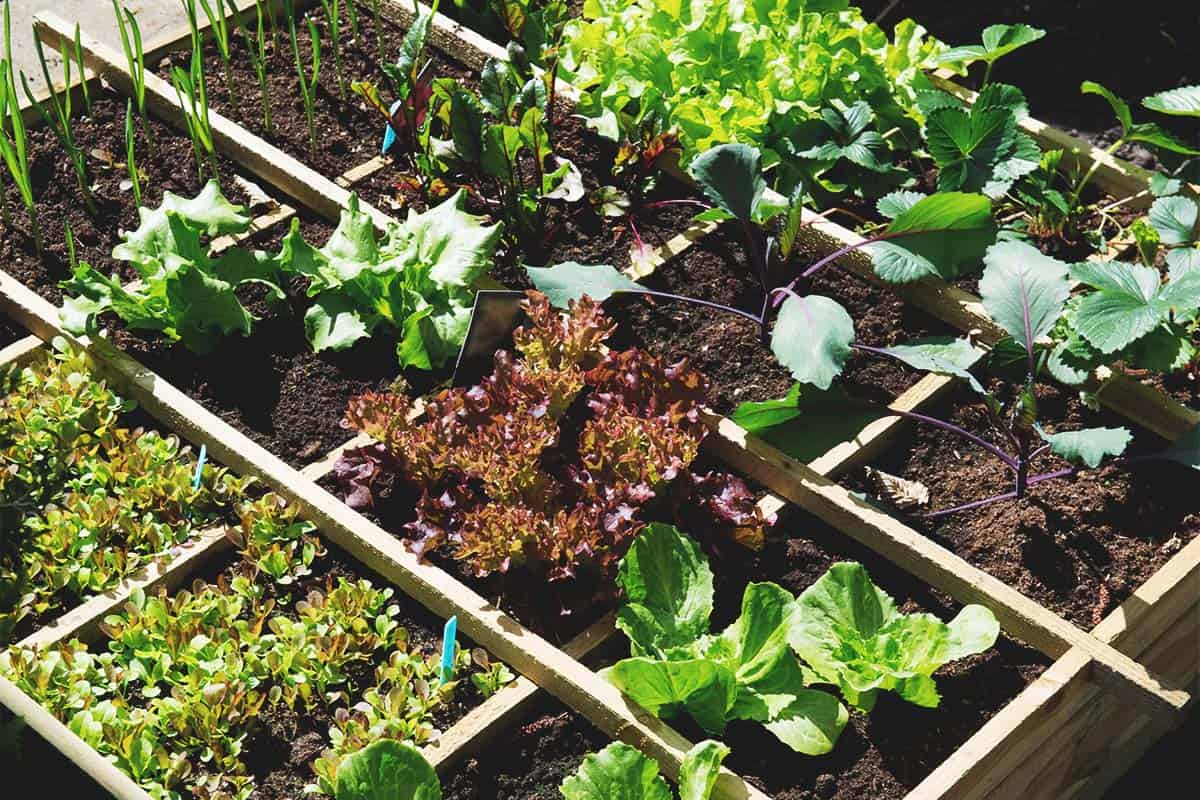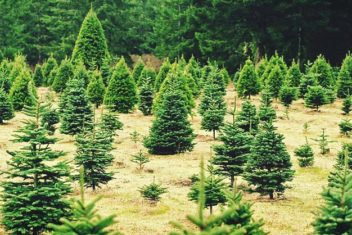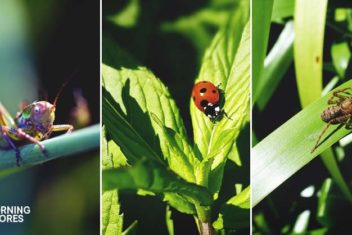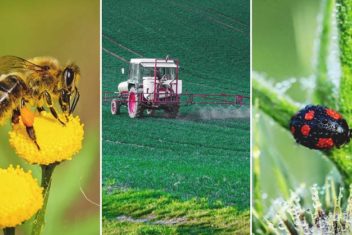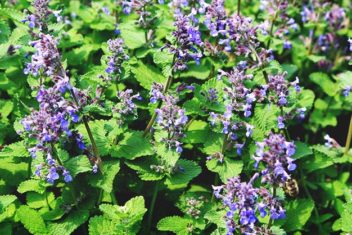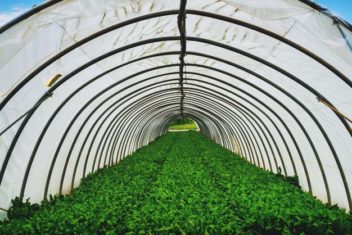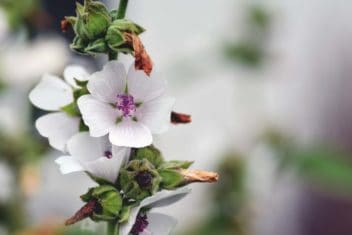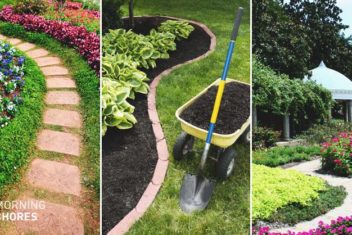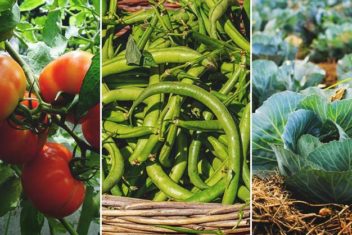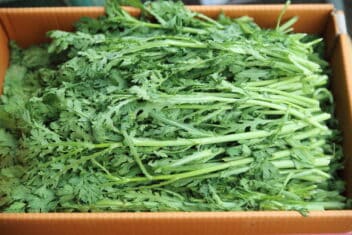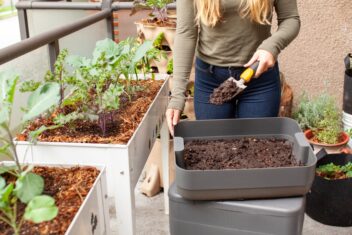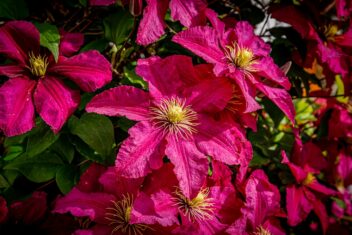Choosing the Right Plants for Your Garden – The Considerations and Care Requirements
I had an amazing patch of Lily of the Valley growing in acidic clay soil, in full sun at my old house. Recently, I decided to plant them on my new homestead.
I heard the plants were toxic to livestock, so I got online to research the risks. Shockingly, every post I read said those beautiful white, fragrant bells grow in shady, alkaline soils. Somehow, I’d defied the odds and grown them perfectly in all the wrong conditions.
So, am I just some kind of rock star gardener who can pull of miracles with my green thumb? Or is something else going on here?
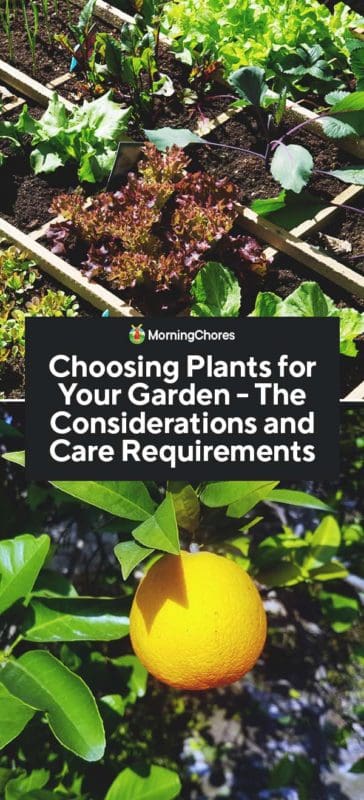
The Truth About Plant Selection and Care Requirements
Trust me, even with years of intensive gardening experience, it’s still impossible for me to grow plants in conditions that aren’t right for their survival. But the fact is, plant’s requirements are a lot more complicated than most quick start growing guides suggest.
Let’s take a closer look at what you really need to know to have success when selecting plants for your garden. Also, if you read to the end, I’ll tell you exactly why my Lily of the Valley grew perfectly in the seemingly “wrong” conditions.
How Cold Tolerant Are Your Plants?
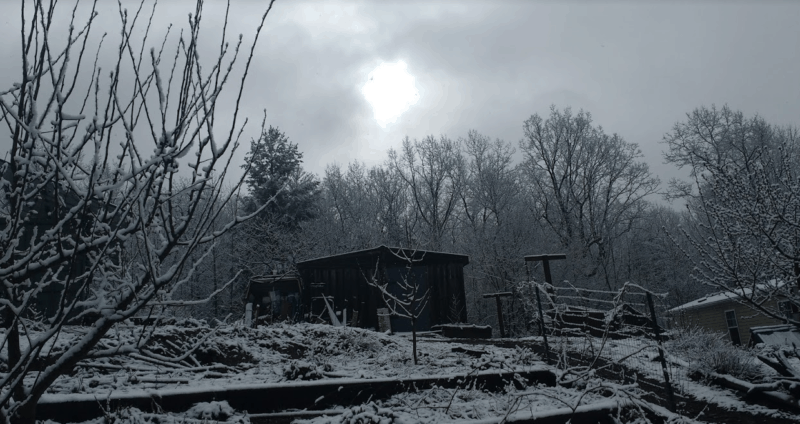
The first big thing that impacts a plant’s likelihood to survive, in any given location, is its cold tolerance.
By knowing your conditions and selecting plants truly suited to them, you can save yourself a lot of time and money spent on plants that underperform as a result of your cold conditions.
When selecting plants to overwinter in your area, and choosing the right location to site them in, you really need to look a lot deeper than the USDA cold hardiness zone to ensure plants thrive.
Use the USDA Plant Hardiness Zones
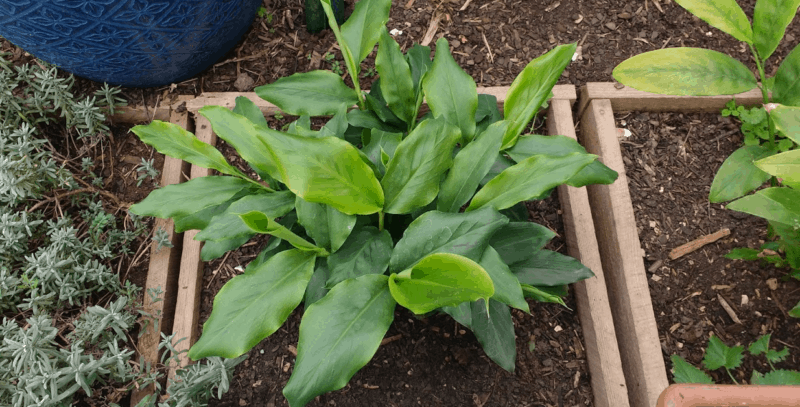
The USDA Plant Hardiness zones are probably one of THE most used plant requirement data points. It’s also one of the most misunderstood measures of plant performance.
According to the USDA:
The 2012 USDA Plant Hardiness Zone Map is the standard by which gardeners and growers can determine which plants are most likely to thrive at a location.
– Limitations of Plant Hardiness Zones
I love the USDA Plant Hardiness Map and use it all the time. But the problem with their statement is that it’s incorrect. The only piece of information this zone map tells you is the average cold temperatures in your area.
It doesn’t tell you anything about your outlier cold days. It doesn’t take into account your wind chill, winter humidity, days of frost, depth of soil freezing, or any other cold-related information you need to know to decide if a plant will actually survive winter in your particular garden in your particular area.
– Unnecessary for Annuals
Frankly, USDA plant hardiness zones also don’t give you any useful information about which plants you can grow as annuals. For example, basil is only able to survive winter in zones 10 and up.
Still, I grow over 50 basil plants from March to October every year in Zone 7. I just grow it as an annual and start it with cold protection.
– How to Correctly Use The USDA Plant Hardiness Data
The USDA Plant Hardiness data is still useful as a starting point for choosing plants. It helps me decide which perennials or biennial plants to avoid leaving in the ground over winter. It can also give you clues to the cold tolerance of annuals so you can make sure to only put them outside when temperatures are well-above its cold threshold.
Cold Requirements of Some Plants
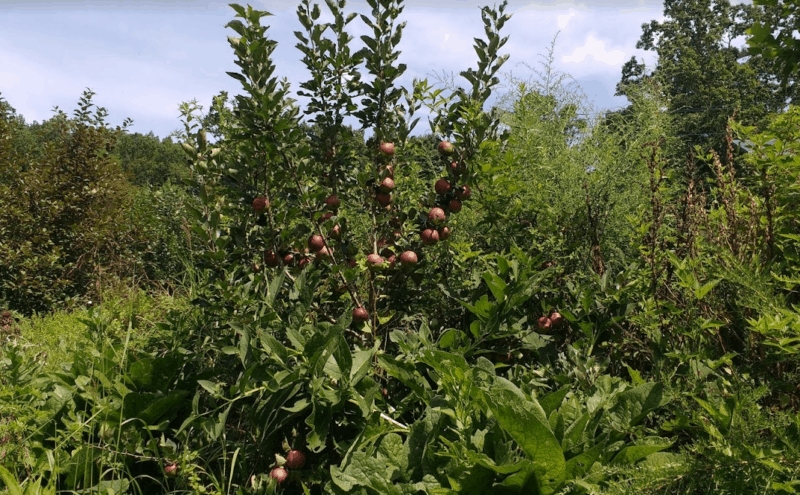
Another factor not included in the USDA Plant Hardiness data is whether your area has sufficient cold weather for a plant. Some plants require a certain number of chill hours or winter vernalization to produce flowers and fruit.
– Chill Hours
For example, most apples are considered cold hardy in zones 4 or above. However, apple trees also require at least 400-1000 chill hours per year. ‘Chill hours’ are times when the soil temperature ranges between 32-45℉.
So even though an apple tree may not freeze to death overwinter in zones 9 or 10, it might never make apples. Until it gets its chill hours, that apple tree won’t bud, flower, be pollinated, or set fruit.
Your local extension office should be able to tell you the typical chill hours for your area. You can also use online calculators to track the actual chill hours for your area. Plant sellers, particularly of fruits, should be able to tell you the chill hour requirements for the plant.
– Vernalization
With flowering herbaceous plants, we call the chill hours requirement ‘vernalization.’ Lots of biennials such as caraway, fennel, carrots, beets, turnips, and celery won’t flower and set seed in their second year unless they also experience a certain number of hours per year where the temperature is between 32-55℉.
Garlic, for example, requires vernalization in order to bulb properly. This is why you have to plant it in fall or very early in spring, or store it in the fridge for 10-12 weeks prior to planting. Many decorative flowering plants and bulbs also require vernalization to trigger flowering.
– Dormancy
Additionally, plants go dormant in response to declining soil temperatures and reduced daylight hours. By lowering sap levels in their stems and dropping leaves, they reduce their risk of being damaged by the cold.
If your climate or daylight conditions don’t trigger dormancy before you get really cold days, plants may not be ready to survive the cold when it comes. In zones 6b-9, or even in parts of your landscape with microclimates, plants can sometimes be at greater risk for damage due to delayed dormancy than they would in a colder zone.
This is the case with many plants where I live. Sweet cherries, for example, are at risk for not being dormant early enough in fall and break dormancy too early in spring. They suffer lots of limb loss as a result. That makes them more susceptible to diseases.
Soil and Cold Factors to Consider
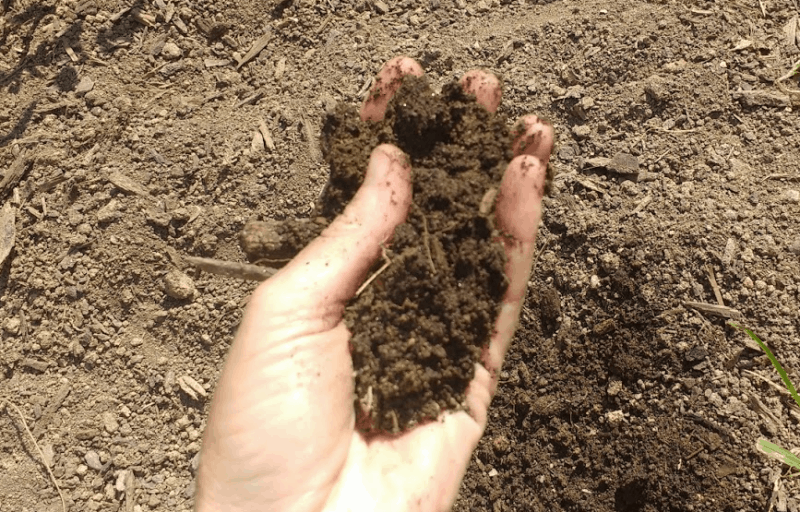
Temperature is only one factor that determines what plants can overwinter in your climate. Soil depth, moisture-holding capacity, and root structure also play a role in a plant’s actual overwintering capacity and therefore, if it is a plant you should select.
– Soil Quality
Boggy and shallow soils are more prone to freeze and thaw cycles. So, anything you plant in locations with that kind of soil will be subjected to more cold risks than plants in deep, loamy soils.
– Root Development
If you plant something late in the season, their roots may not have had time to establish. So, those young plant roots will be experiencing wider temperature fluctuations in the top few inches of soil.
– Soil Depth
If your soil is shallow, then even mature plants can’t root deeply. Because freezing, particularly of water in the soil, happens faster in the top few inches, plant desiccation and root damage are more likely in shallow soils.
Local Windchill Conditions
Windchill impacts us when we go outside on a blustery day. The experience is the same for your plants. Wind plus cold can force conditions known in colder zones. So, you also need to know your potential wind chill factor.
I live on the side of the mountain. Several times a year, we get brutally cold winds whipping across our property. Even though our zone is 7a, there are places on my property that fall closer to 6a when I factor in windchill.
Knowing that, completely changes my ideas around plant selection, and what I choose to plant in those windchill risk zones or it means I have to plan wind protection for marginal plants.
What Heat Factors Must You Consider?
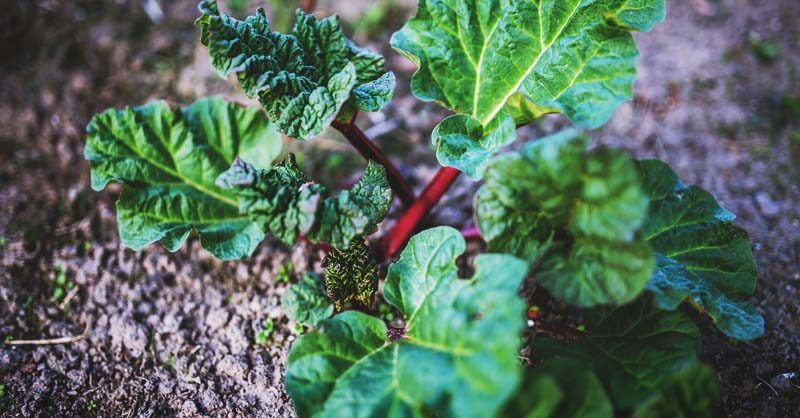
On the flip side, plants also have limits to heat tolerance.
Are Your Plants Heat Hardy or Not?
There is a tool called the Plant Heat-Zone Map developed by the American Horticultural Society. It’s similar to the USDA Plant Hardiness tool, except it relates to heat. It indicates your average number of days above 86℉ each year.
– Transpiration and Heat Stress
Many plants experience heat stress and can’t transpire beginning at about 86℉. When a plant can’t transpire, it can’t cool itself. It also can’t uptake nutrients required for photosynthesis. If a plant can’t cool itself or photosynthesize, then it will die as a result of heat stress.
For zones with lots of days above that temperature, you must select plants that have higher heat tolerances than 86℉. Alternatively, you need to provide mechanisms to cool plants to keep them alive. Mulching, watering with cold water, and using temporary shade cover can help.
The problem is this heat zone map isn’t universally used at this point, although its popularity is increasing. In the meantime, there are some key things you can look for to get a sense of a plant’s heat tolerance when doing your plant selection research.
Heat Tolerance Research To Do
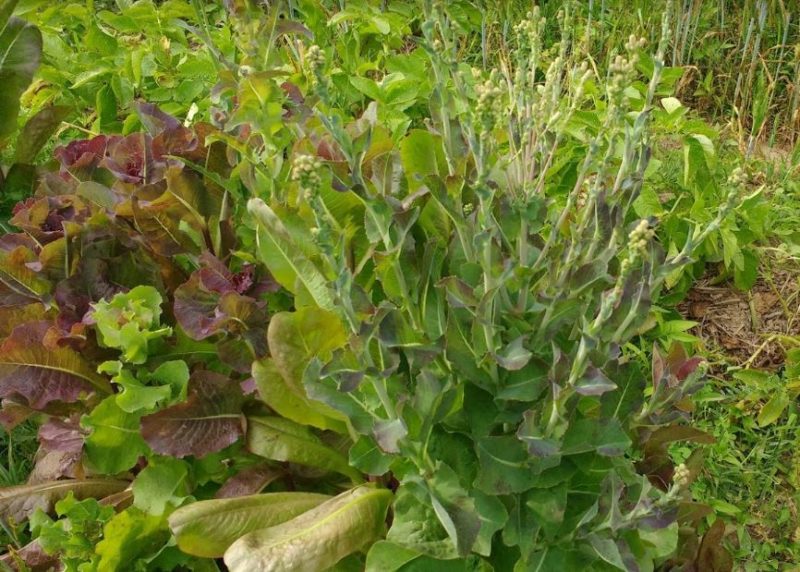
Since there’s no universal way of identifying a plant’s heat tolerance, you can look for other information. Some plant sellers or planting guides will give you specific temperatures that plants can tolerate before experiencing stress. They may use terms like heat-tolerant or protect from extreme heat as clues.
– Bolting Threshold
You may also be able to find details on what conditions cause bolting. Bolting is a plant’s last-ditch effort to reproduce when it feels as if it’s about to die from stress. So, the actual heat comfort zone is usually at least 5 degrees lower than when a plant bolts.
– Native Climate
Most of the plants we grow started out as native to somewhere. If you trace a plant’s history to find out where it grows naturally, then you can often find clues about its heat tolerances.
– Naturalized Range
Also, as we move plants around the world, they tend to escape into landscapes and become naturalized. Naturalized means they basically behave like a native.
So, if you research locations where the plant you are considering is naturalized, you can find out more about its preferred temperature ranges.
Basic Care Conditions to Remember

Now, beyond heat and cold requirements, there are still all the other basics of plant care to take into account.
Soil Preferences
Plants have different soil requirements. Soil pH is the biggie because if that’s not in the right range, plants can’t update nutrients. Depth is another big factor because plants can become root bound in poor soil just as they can in a pot.
Soil moisture content matters too. Some plants like wet roots, others can’t stand them. Some are drought tolerant. Others need regular watering.
Sun Requirements
Sun requirements also make a big difference. Some plants can tolerate different levels of light, while others have very specific needs and will die in the wrong light conditions.
Some plants even require certain quantities of daylight under certain conditions. Long-day onions, for example, won’t begin to bulb until day length reaches 14-15 hours a day.
Short day onions, by contrast, will begin to bulb at 12 hours of daylight. This is important because, in hot climates, you need them to mature earlier under shorter days so they don’t bolt from the heat.
Other Requirements
Beyond the basics of light and soil, plants may need special nutrients. Staking or training might be necessary. Pest prevention needs could be a factor in whether plants will grow successfully in your landscape.
So, Why Can I Grow Lily of the Valley in the Wrong Conditions?
Now, back to those Lily of the Valley plants mentioned earlier. The reason they grew so well in all the supposedly “wrong” conditions was that I actually harvested them from similar conditions.
I found them growing in a cleared forest that had eroded clay soils. They were thriving perfectly in that environment. So, when I went to plant them at home, I picked a spot that was similar.
That brings me to my final bit of advice on plant selection:
Plant Adaptation
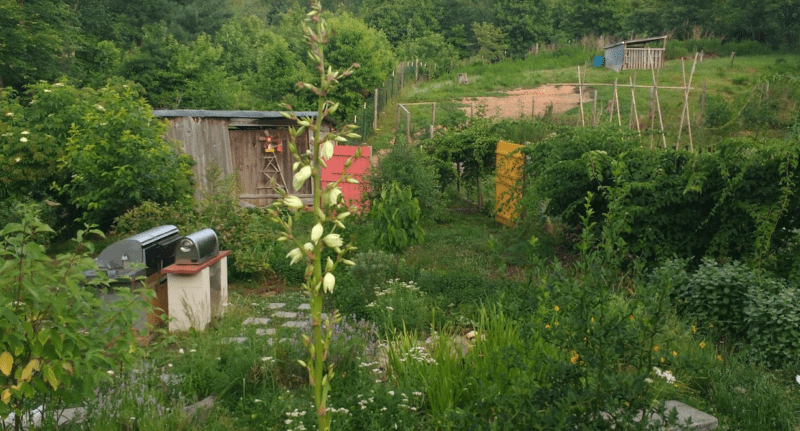
Plants become adapted to their environment over time. So, if you want the best results when selecting plants that will grow perfectly in your environment, buy them from plant sellers growing them in your climate. Or propagate them yourself from areas just like where you want them to thrive.
If you can’t find your plants locally, then look for climate analogs. If the climate the plant was raised in is similar to the one you live in, the easier it will be for it to acclimate to your landscape. That will increase the survival rate even if you make a few mistakes such as not having perfect soil conditions or watering a bit more or less than the plant is accustomed to.
Of course, no matter where you get your plants, they need a bit of coddling until their roots are established. Then, they need regular care to ensure they stay healthy long term. But a well-chosen and loved plant will give you many happy returns – year after year!
